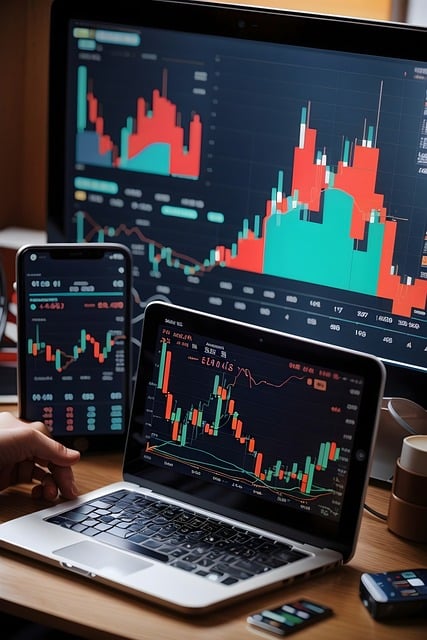In the world of financial markets, where every trade can lead to significant gains or losses, it’s crucial to refine your trading skills. Enter paper trading—an often underestimated practice that allows traders to simulate real-world trading without any financial risk. Whether you’re new to trading or looking to polish your techniques, paper trading offers a valuable opportunity to test strategies, build confidence, and learn without losing real money. This guide explores what paper trading is, its benefits, how to get started, and how to smoothly transition from paper trading to live trading.
What is Paper Trade?
Paper trading involves simulating trading activities using a virtual account instead of real money. Traders make hypothetical trades based on real market data and track how their strategies would perform if they were trading with actual funds. Historically, paper trading involved jotting down trades on paper, but today’s platforms offer more sophisticated simulations.
By using virtual funds, traders can practice without the fear of financial loss, making paper trading an essential tool for developing and testing trading strategies in a realistic setting.
You can see all the trade free.
Why Paper Trade Matters

- Risk-Free Practice: One of the biggest advantages of paper trading is that it eliminates financial risk. This allows traders to experiment with different strategies and learn from their mistakes without any monetary consequences.
- Testing Strategies: Paper trading is an ideal way to test out new trading strategies and see how they perform under real market conditions. By analyzing the results, traders can tweak their strategies before applying them in live trading.
- Learning the Platform: It’s a great way to become familiar with trading platforms and tools. Getting comfortable with executing trades, using charting features, and analyzing data can make the transition to live trading smoother.
- Boosting Confidence: Success in paper trade can build confidence. By seeing positive results in a simulated environment, traders can feel more assured about their trading decisions.
- Emotional Preparation: Trading involves dealing with emotions such as fear and greed. Paper trading helps traders develop a disciplined approach and manage their emotions without the added pressure of real financial stakes.
How to Start Paper Trading
- Choose a Platform: Select a trading platform that offers paper trading. Look for one that provides real-time market data, advanced charting tools, and a user-friendly interface. Popular platforms include Thinkorswim by TD Ameritrade, Interactive Brokers, and TradingView.
- Set Up Your Account: Once you’ve chosen a platform, create a paper trading account. This account will come with a virtual balance that mimics real trading conditions without any financial risk.
- Define Your Goals: Clearly outline what you aim to achieve with paper trading. Whether you want to master a specific strategy, understand market trends, or build confidence, having clear goals will guide your practice.
- Create a Trading Plan: Develop a trading plan that includes your strategies, risk management rules, and objectives. This plan should detail your criteria for entering and exiting trades, position sizing, and how you’ll manage your trades.
- Start Trading: Begin executing trades based on your plan. Keep track of your performance and review your trades regularly. Pay attention to how different strategies perform in various market conditions.
- Review and Adjust: Regularly assess your performance and make adjustments as needed. Use the insights gained from paper trade to refine your strategies and improve your approach.
Common Mistakes to Avoid in Paper Trading
- Overconfidence: Success in paper can sometimes lead to overconfidence. Remember that simulated success doesn’t always translate to live trading success, where emotional and financial factors come into play.
- Lack of Emotional Pressure: Paper doesn’t have the emotional stakes of real trading. The psychological pressure of managing real money is different and can affect decision-making and performance.
- Ignoring Market Realities: Traders might become too comfortable with the simulated environment and neglect real-world market conditions. Staying updated on market news and events is crucial for realistic .
- Neglecting Risk Management: Some traders might ignore risk management in paper, leading to unrealistic expectations. Effective risk management is vital for long-term success in live trading.
- Overcomplicating Strategies: It’s easy to overcomplicate strategies in a simulated environment. Start with straightforward, effective strategies and gradually add complexity as you gain experience.
Transitioning from Paper to Live Trading
Moving from paper trading to live trade requires careful preparation:
- Start Small: Begin with a small amount of real money to test your strategies and adjust to the emotional aspects of live. This approach helps minimize risk and eases the transition.
- Stick to Your Plan: Adhere to your plan and risk management rules. The discipline you developed during paper will be essential for managing real money.
- Evaluate and Adapt: Continuously assess your performance and adjust your strategies based on real experiences. Learning from live trading will help refine your approach.
- Stay Informed: Keep up with market news and events. Staying informed will help you make well-informed decisions and adapt to changing market conditions.
- Manage Emotions: Develop techniques to handle emotions such as stress and anxiety. Building emotional resilience will contribute to better decision-making and overall success.
Conclusion
Paper trade is an invaluable tool for improving your skills, testing strategies, and building confidence. It provides a risk-free environment to gain experience and refine your approach without financial consequences. However, it’s essential to recognize that live trading involves real money and emotional challenges, so prepare for these factors as you transition from paper trading.
Whether you’re a beginner or an experienced trader looking to explore new strategies, incorporating paper trading into your practice routine can significantly enhance your journey. Embrace the opportunity to learn, adapt, and grow, and you’ll be well-prepared to tackle the dynamic world of financial markets with greater skill and confidence.